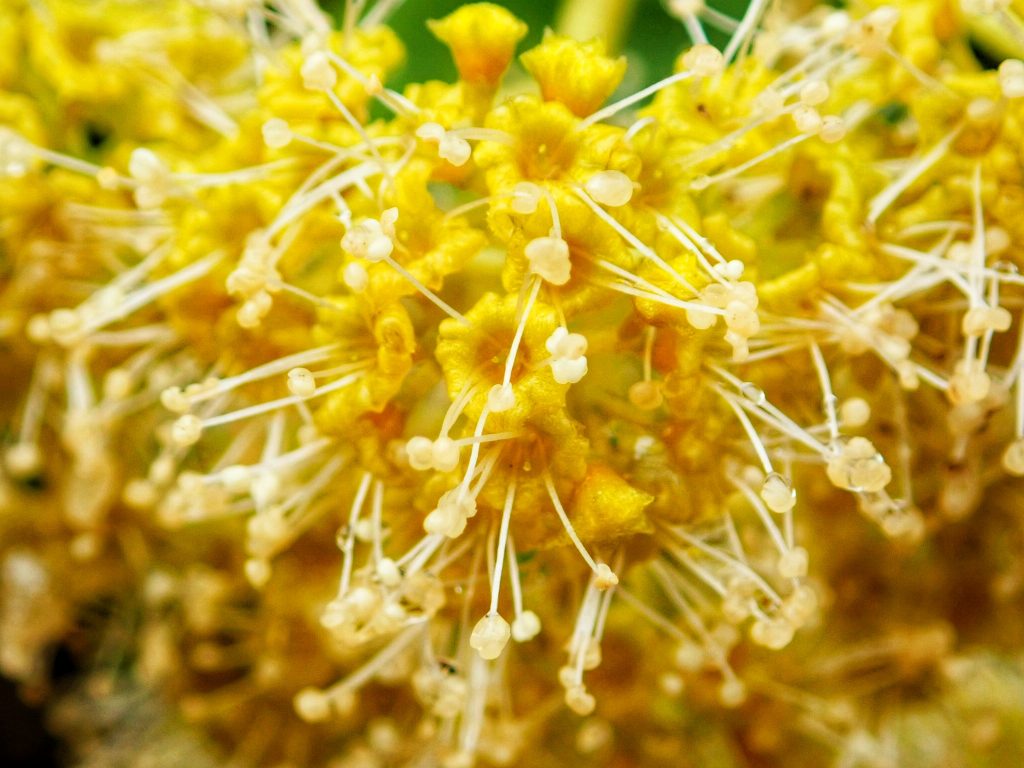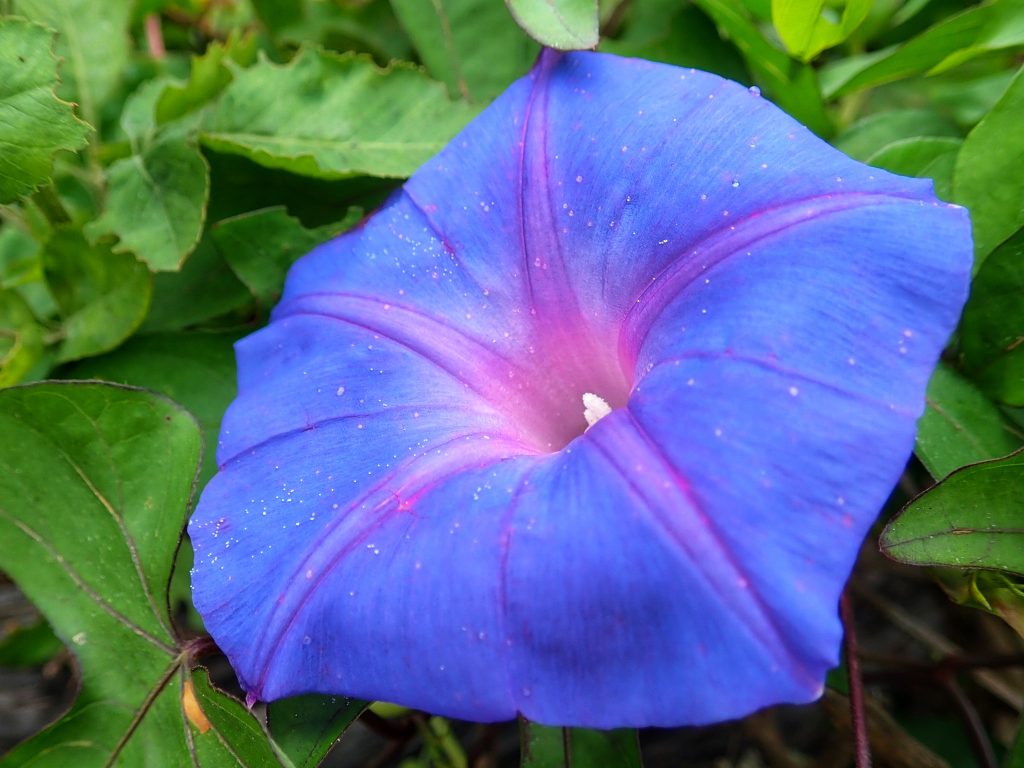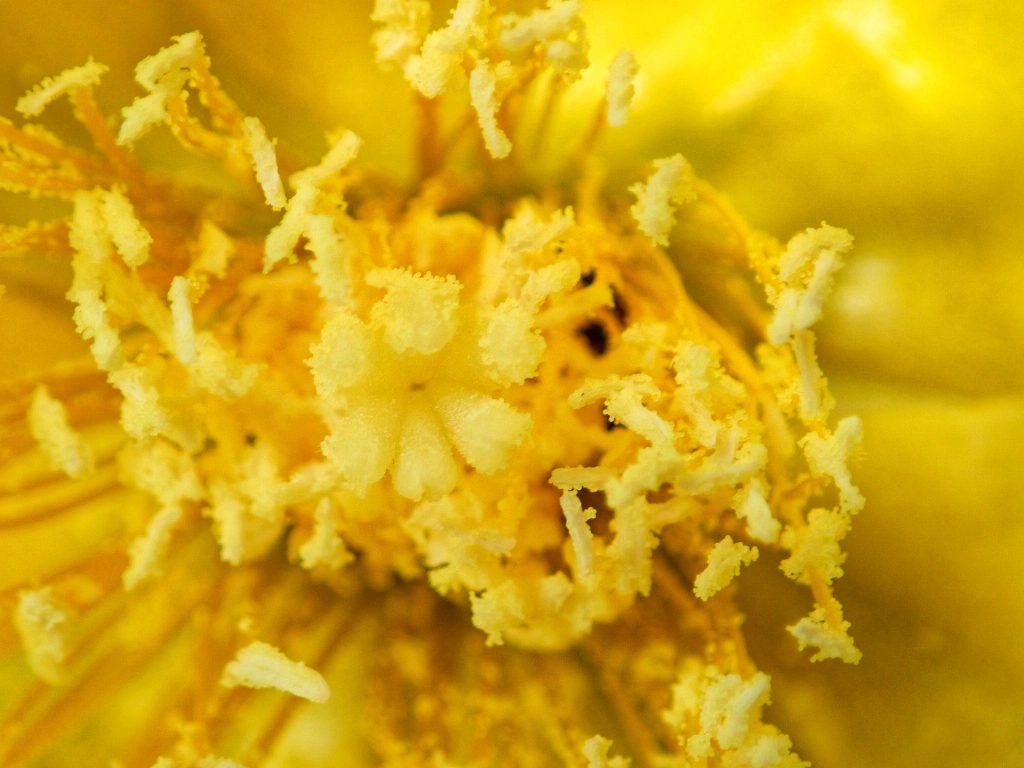An Ethnobotany Education

This morning Jeff and I went on an ethnobotany walking tour around the Jupiter Inlet Lighthouse Outstanding Natural Area ( JILONA ) South Trail. Sophia was our tour guide. She is a graduate of the FSU Environmental Sciences program and is currently working as the Environmental Resource Manager for the Jupiter Inlet Lighthouse Outstanding Natural Area. This is a year-long internship position supported by the Emerging Professional Internship Corps which is associated with Americorps. She was very knowledgeable, patient, and gave us a very nice experience.

This post covers some of the things we learned today
The Golden Fig: Ficus aurea

Also known as the Florida Strangler Fig, this ficus tree is native to South Florida and produces these tiny little figs. These are only about 0.5-1.0cm across but still will taste like a sweet fig when they’re ripe. Even though the tree is called a “golden fig”, the fruit is ripe when they turn more of a red color. Like most (all?) ficus plants, this tree will also produce a milky sap that has many uses including a salve for wounds, glue, and chewing gum. The sap dissolved in water is used in the Caribbean for heartburn, palpitations, and chest pains. It can also be used as a sticky trap for birds (bird lime). The aerial roots (roots that develop above the ground) make good binding material or lines for fishing. With countless other possible functions, the wood is also used to make bows and arrows. In Mexican cultures, the tree is used to make paper which is painted in colorful vignettes for ceremonial purposes and an artistic historical cultural record.

___
Sea grape: Coccoloba uvifera

This prolific tree produces shade and privacy from your neighbors (and lots of leaves to rake up each season!), but also has ethnobotanic functions both edible and otherwise useful. The tree does produce grapes as indicated by the name. These grow in clusters that will ripen one fruit at a time (instead of the entire cluster all at once). Just like grapes, they can be eaten plain or made into jellies or wine. Reportedly the jelly tastes just like apple jelly – Jeff’s favorite to eat with Spam! The bark and roots have a lot of tannin and can be boiled to create an astringent. The tannins also produce a red color that can be used to boil cotton fabric. The leaves can be used a plates and the wood for furniture.
You can also use the smaller dried leaves as postcards! The USPS accepts these for mailing – I have to try this out 🙂

We also found a stinkbug while talking about the grapes. While these bugs are generally considered a pest that damages important crops, there is a chance they may help important pollinators indirectly.
___
Love Vine: Cassytha filiformis
This is a parasitic vine that used to be more unusual (controlled by fire), but now is seen widely through the scrub areas in South Florida. The American colloquial name may be related to the practice of boiling the vine with gumbo limbo to create a tea used to make someone fall in love. Additionally women who had just given birth would bathe in water steeped with the vine for 9 days to promote healing and health. A poultice can be produced and applied over the scalp to prevent hair loss (or use the tea to rinse the scalp) or similarly to control lice and other infection/infestations. The plant can be prepared in various ways and used either by itself or in combination with other plants to treat headache, sore eyes, stomach ache, high blood pressure, and stopping hemorrhage. The delicate tendrils of new growth can be chewed in times of famine.
IMPORTANT: All of these edible uses being noted, it is important to know there is a narrow safety range in using the plant internally – toxicity happens easily ranging from gastrointestinal upset to tremors to death. So maybe just use this one topically unless you know what you are doing!
___
Smilax: Smilax havanensis (?)

Also called the Florida green breir, the soft tendrils of new growth taste like asaparagus. The rhizomes were combined with molasses and corn to make sarsaparilla. The rhizomes also can be used to dye cloth a red color. There are many species of Smilax and various preparations of either the specific part of the plant or in combination with other plants can be used to treat a very wide variety of diseases. This one actually does taste good!
I have been ripping this one out of our trees over and over again. Now that I know it has some good uses (and may be nearly impossible to eliminate), perhaps I will find some way to cultivate it in a more manageable and useful way.
___
Silver Saw Palmetto: Serenoa spp
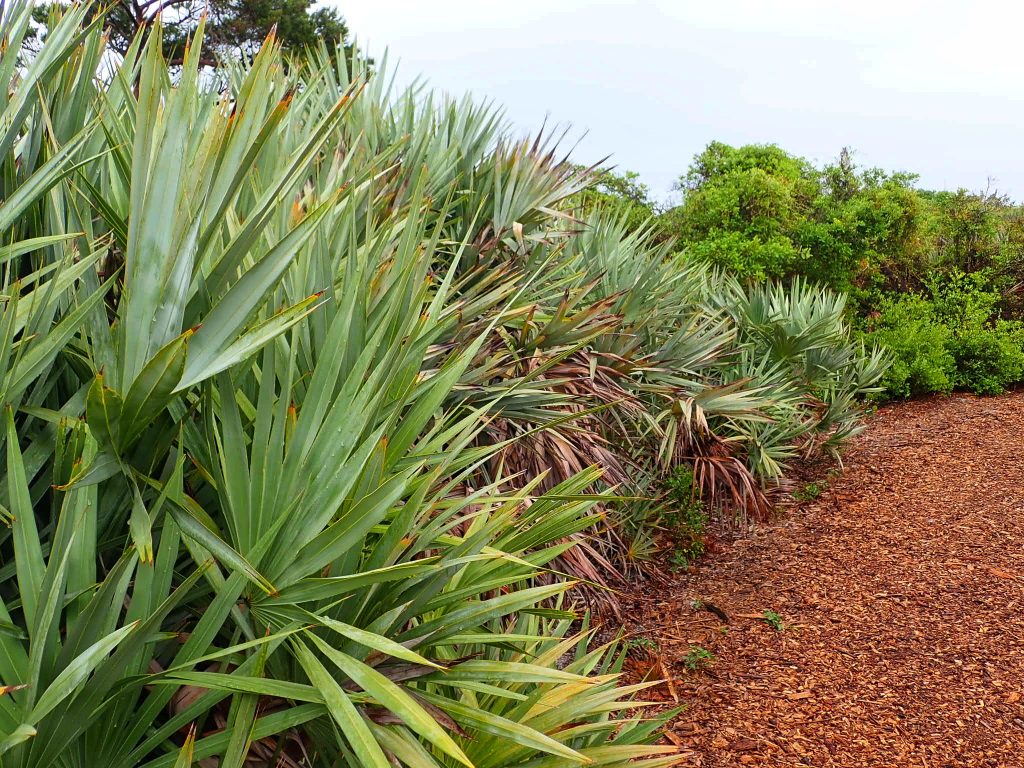
The leaves are used for weaving, string, and miscellaneous tourist gift items. The fruit/berries have fatty acids, tannins, estrogenic activity, and are a good source of energetic sugars. Preparations of the berry have been used for dieresis, sedation, and anti-inflammatories. They are also used to treat asthma, cough, chronic bronchitis, diarrhea, migraine, and prostate problems. In the last 20-30 years, the possible use in human benign prostatic hyperplasia has been researched formally in several different countries with still equivocal results.
Although these berries are edible, the pleasure you get from eating them may be limited. Jonathan Dickinson wrote that the berries taste like “rotten cheese steeped in tobacco.”
Bees love these blooms and the Saw Palmetto is an important part of the South Florida honey production industry.
___
Prickly Pear: Opuntia stricta

The fruit or pads can be eaten raw or cooked – the plant is a good source of sugar with relatively high water content. Here are some recipes for prickly pear.
Apparently the fruit doesn’t have much flavor as there is a reference in the Charlie Pierce books about needing a lot of sugar in the pies his mom used to make. More notably, there is a potent dye in the fruit that can be used to dye foods (Sophia likes to dye her rice), cotton cloth, and will make the stools of coyotes and your own urine very red like blood!
So don’t be alarmed if it looks like you are peeing blood right after eating prickly pear fruit.

___
Live oak: Quercus virginiana
These majestic trees produce acorns that are an excellent source of calories in times of need. One ounce of acorns provides 100 calories of nutrition. The acorns liberate oil and or can be made into a flour.

___
Poisonwood: Metopium toxiferum
We also learned about the Poisonwood tree which is similar to poison ivy in the toxin that causes an itchy rash. The plant is so toxic, it even damages itself – note the brown spots on the leaves! The best thing to learn about this one is how to stay far away from it. I can also speak from the direct experience of digging in the dirt a few yards from the trunk of a mango tree – don’t even do that!!
___
Wild lime: Zanthoxylum fagara

This is a very aromatic bush that produces very tiny fruit. This is fruit that is not in the traditional sense of what we know to be limes, but instead punctuate little seeded nodules. While the fruit is edible, the flavor is very pungent and acts as a numbing agent. The more practical use is as a source of pleasant citrus odor via boiling a pot in the home or using the extracted oil like a perfume. And as with all trees, the wood is useful to make furniture and tools.

As a side note of interest, this is the host plant for the largest butterfly in Florida, the Giant Swallowtail.

___
Paradise tree: Simaruba Glauca
The wood is termite-resistant for home and furniture-building. The fruit tastes sweet and the seed has a high oil content.

Sabal palmetto: Arecaceae

This is the state tree of Florida with a multitude of uses. The berries are edible and taste like dates. The heart of the palm is very large and tastes like water chestnut raw. It tastes like cabbage when cooked. It is important to note that taking the heart kills the tree so just harvest this if you are taking the tree anyway. The fronds are used in weaving and as roof thatching – the roof in the chickiee at the base of the Jupiter Inlet Lighthouse survived Hurricane Irma with extremely little damage! The average lifespan of these roofs are 3 years – not bad when the trees produce copious replacement material. The boots that shed from the trunks make good shin guards. The fibrous material from the fronds and trunk make good twine material.

___
Bay tree: (not sure which species we saw today – sorry! Maybe the Swamp Bay?)
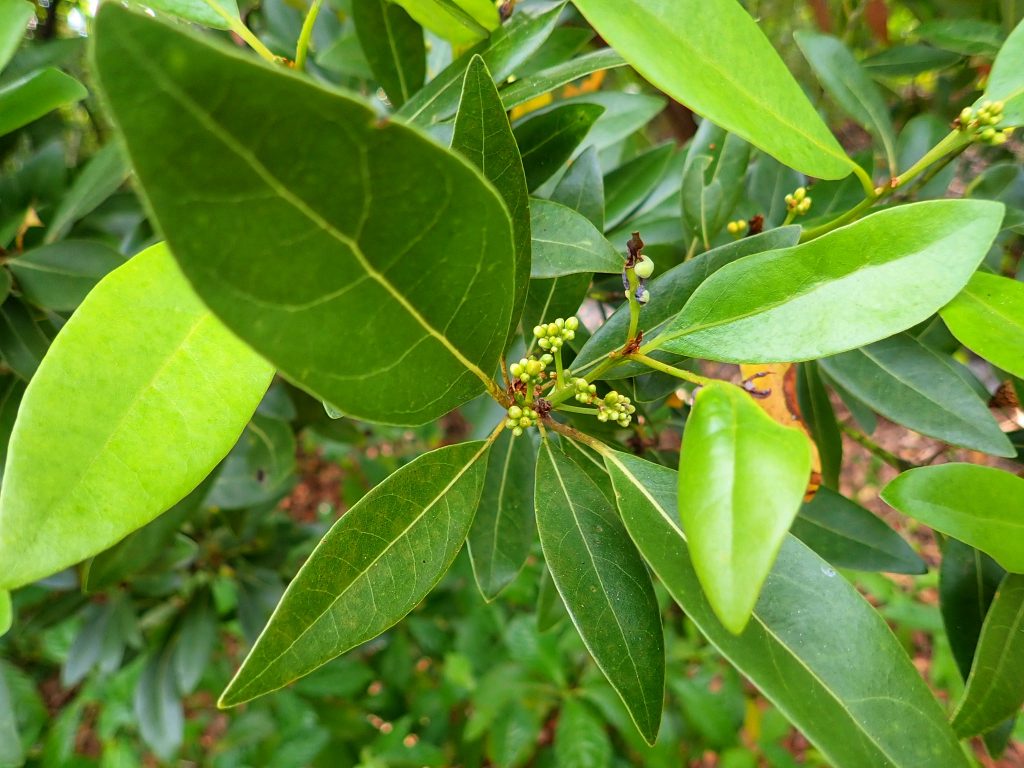
The leaves are just like what you would get from the spice aisle in the grocery store. They are so aromatic when you crush the leaves and make a good broth flavoring. The bad news is that trees are being taken down right and left by the Laurel Wilt Beetle – an invasive species that kills the entire tree like the one on the opposite side of the path from the currently healthy one. There is concern that the Bay tree will be extinct in the next few years thanks to this scourge – pray for the survival of this little JILONA tree!

___
Hercules’ Club: Zanthoxylum clava-herculis

Also called the Toothache tree, the leaves and bark produce a tingling and numbing sensation over the tongue and gums. I tried this out from just a small green leaf – the flavor builds into a very mouth-watering pungent citrus sensation followed by a diffuse tingling of my entire mouth. The hypersalivation lasted about 5-10 minutes and it was almost 20 minutes before I felt back to normal again. Not drastically numbing, but better than nothing when you have a toothache! Watch out for those giant thorns…
The tree is another host plant for the Giant Swallowtail butterfly.
___


___
Gumbo Limbo: Bursera simaruba
Also known as the Tourist Tree because the bark is red and peels like a sunburned tourist. This tree is not particularly edible. I have seen it included in some concoctions with other plants for medicinal teas, but not really as an exclusive ingredient. The wood is otherwise good for building and tools.
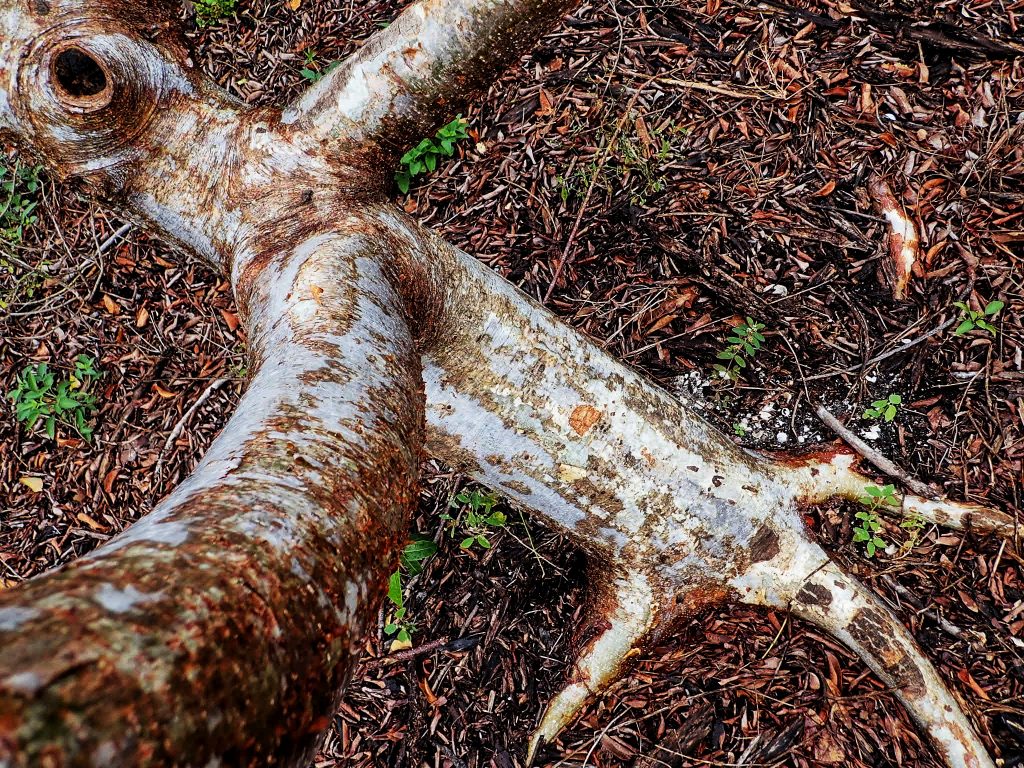
___
Gray Nickerbean: Caesalpinia bonduc
This is a species of sea bean that is not edible – in fact it is toxic if you eat it! The beans dry into little stones that used to be painted and used as marbles. I have seen these washed up on the beach and I have seen plants growing by the Hobe Sound Preserve beach overlook and in the brush along US 1 near Jonathan Dickinson State Park.
___
Cocoa Plum: Chrysobalanus icaco


INET Farms
This is a popular ornamental here in Jupiter – I see the hedges in some of the fancy neighborhoods along my walking paths. Now I know what the mysterious fruits are! This bush produces a small plum that turns purple when it’s ripe. You can eat the fruit plain or use it to make jams and desserts. I tasted one that was not quite ripe and it was very bitter with a chalky texture. So definitely wait until they are very purple first!

___
Ground Cherry: Physalis walteri (?)

This ground cover produces little bright orange fruits like tomatillos. They should have a sweet taste. Unripe fruit is bitter and toxic. If it looks ripe but still tastes bitter, DO NOT EAT IT! I wasn’t able to taste one of these, but there are several maturing that should be ready soon!
___
Spanish Needles: Bidens alba
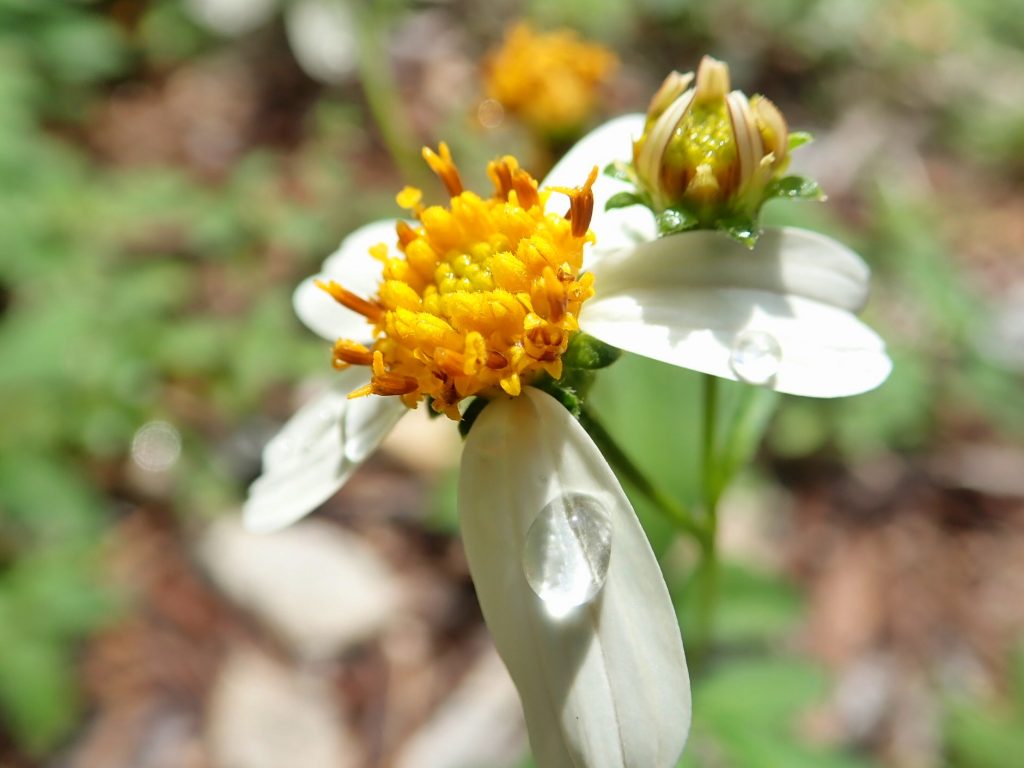
This pretty little flower is the third most reliable source of nectar for bees in Florida (preceded by non-native citrus and Saw Palmetto). The entire plant is edible with the flower and leaves making a sharp flavorful addition to salads. The plant is also antibacterial, antimalarial, and may prevent or treat leukemia. Dried leaves are used as a tobacco substitute or can be brewed into a tea and can have a calming effect.
Side note: The seeds are so sticky to everything! This is annoying but I am now less annoyed than I used to be knowing I can pick them off my pants and scatter them in the raw yard that I am hoping to populate with native plants. In that regard, this is an easy way to collect seeds!
___
Muscadine grapes: Vitis rotundifolia

Like cultivated grapes, these grow a sweet bunched fruit to eat plain or made into jellies, desserts, etc. The leaves are also edible and tasty steamed or used as a wrap around flavorful filling.
___
Wild Bird Pepper: Capsicum annuum var. glabriusculum

This is a nice full bush with these adorable tiny little peppers. This shrub is native to South Florida and produces these VERY spicy tiny peppers. Sophia warns that we should only use a couple of these for an entire bowl of salsa. Imagine how much kick you’ll get out of an entire bush! I’m definitely adding this to the yard.
___
Rouge berry: Rivinia humilis

Birds love the berries. Humans don’t eat these but the berries are used in cosmetics –hence the name.
___
Beauty Berry: Callicarpa Americana
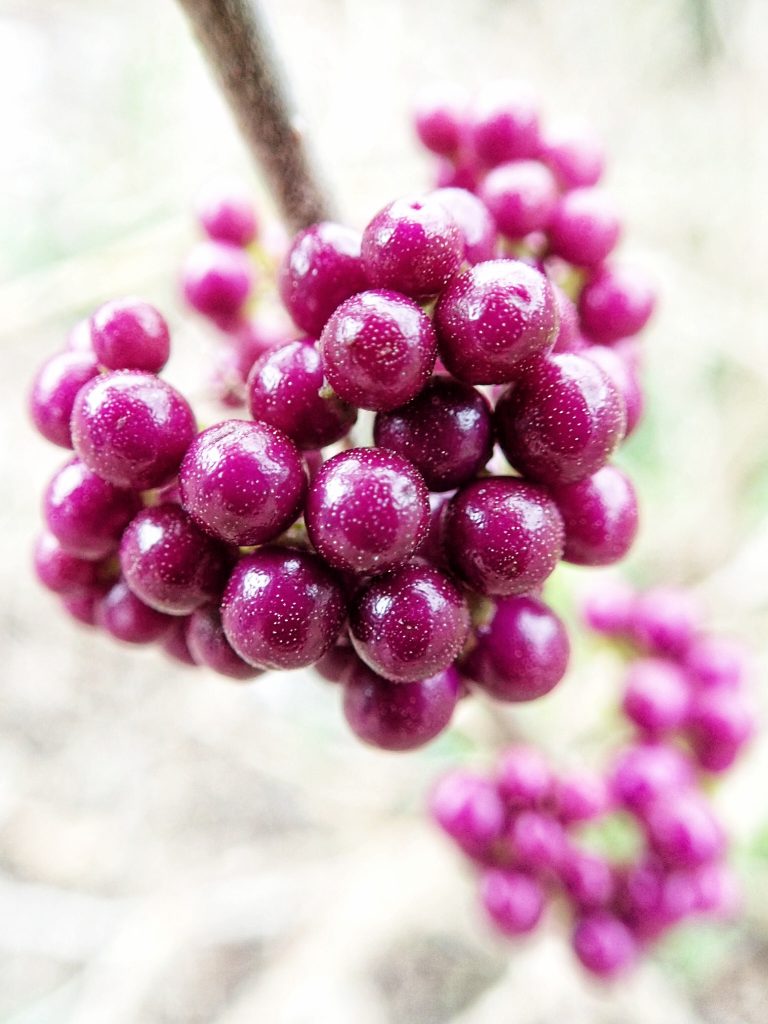
Also known as the American mulberry, these shrubs produce vibrantly purple berries that attract birds and other wildlife to the yard. The berries are flavorful and useful in jellies and desserts. You can also use the leaves as an insect repellent. You can extract the oils and combine with a base (like a cream) and use on your skin for a natural repellant.
___
Seaside portulaca: Sesuvium portulacastrum

This is a very tasty succulent with a salty flavor. We grow a cultivated variant (also called pursulane) with our succulent tower in the yard. I think we should add this one to our limestone boulders in the side yard. The plant is reputed to also have a chemical that enhances athletic performance – even if this is true, I doubt I will be fending my yard from foraging jocks!

___
Pond apple: Anonna glabra

This tree grows well in swampy areas and produces showy flowers and large fruits. The fruit is used to make jellies and custards and may be tasty. Native Indians also used the fruit to make a cleaning product. Incidentally, the tree apparently grows so well that it is classified as a highly invasive weed in Australia.
___
Mulberry tree: (Morus rubra?)
The tree is small but already producing several small immature fruits along the ends of the higher branches – it won’t be long until they are sweet sweet snacks for the resident interns or a lucky hiker. The root of the tree may be used to help urinary tract problems, and the sap might be used topically to treat ringworm. A tea made from the bark might treat intestinal parasites.
I didn’t take pictures of this tree for some reason, so here are a couple taken this week from my own mulberry tree 🙂
___
Papaya and pineapple and a rogue dragon fruit are also in the park but are not likely native. Despite this, they are obviously delicious!

___
Saltbush: Baccharis halimifolia
Pretty and fragrant and full of bees!
___
Our walk also took us to a steep overlook over the Jupiter Inlet and Indian Lagoon waterways. This is one of the Easternmost points in Florida which gives our water such a beautiful blue color. Incredibly, the dark orange color you might sometimes see in the sand dunes is from sand that was blown over all the way from the Sahara desert! The steep bluff is eroding at an alarming rate, accelerated by the frequent visiting of boaters at the base and people trying to climb the dunes. Not to mention the garbage these people leave behind weekly that kind people like Sophia help clean up every week. Please act like responsible adults, people! Don’t make these nice people clean up your mess.




Manatees!
___
Near this bluff is the highest point in Palm Beach County – amazing to consider since it is just a few steps down to the water!


___
Throughout the park are beautiful wildflowers that attract pollinators. We got rained on at the end of our tour, so I came back a couple of hours later to snap some pictures of the pretty flowers – even more dramatic with the moisture and lingering raindrops!



Crown of Thorns
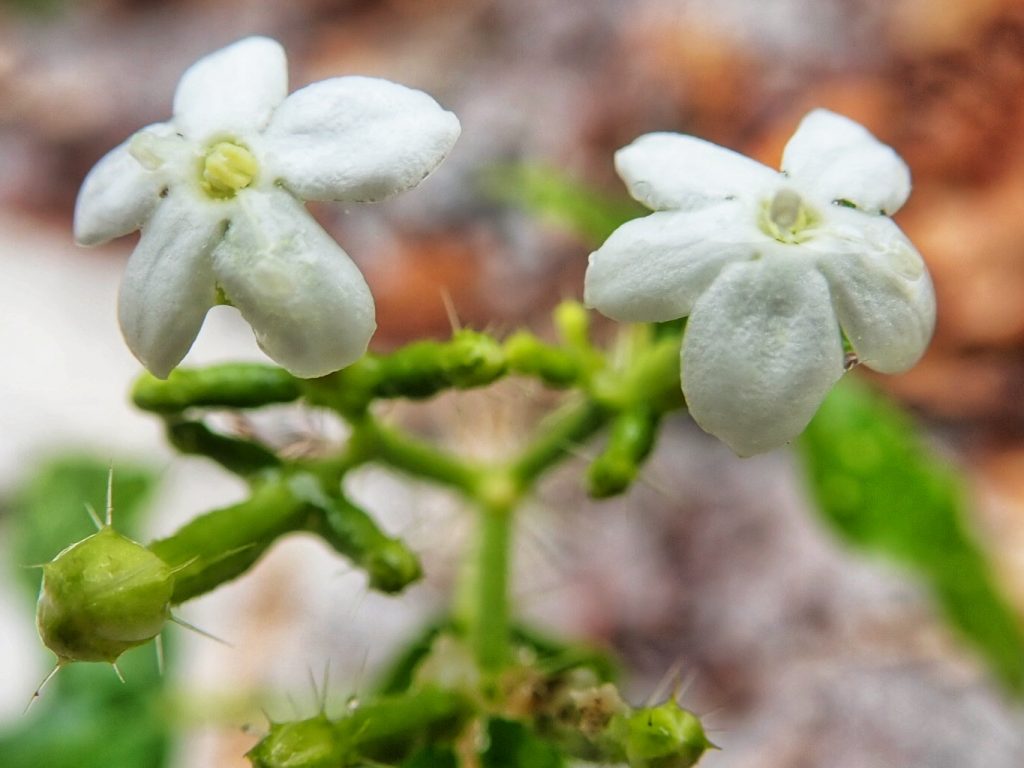

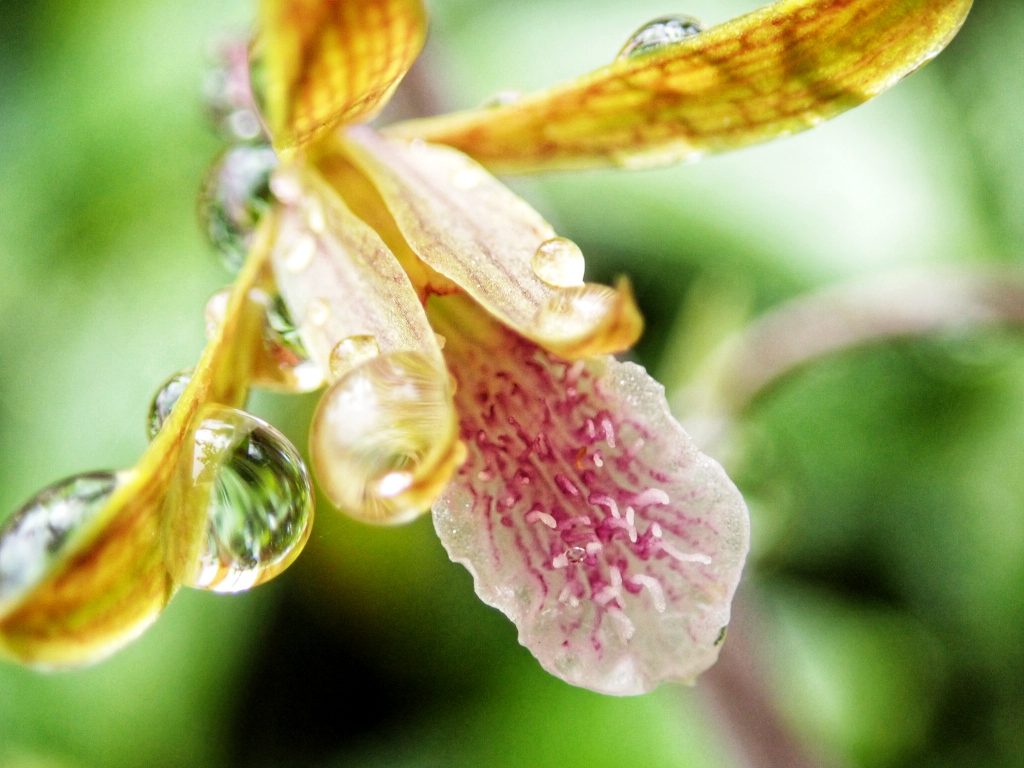
Invasive tiny orchids



Native poinsettia


Vinca

Partridge pea 





___
For all of the edible plants listed in this blog, you only need to simply Google how to eat or prepare them and you will find a multitude of instructional website pages.

Thank you, Sophia, and Jupiter Lighthouse programs!
Sources
Sophia the tour guide extraordinaire
Florida Ethnobotany, Daniel F. Austin, CRC Press, Nov 29, 2004
Tags: Ethnobotany, Foraging, Jupiter Lighthouse, Wildflowers





















